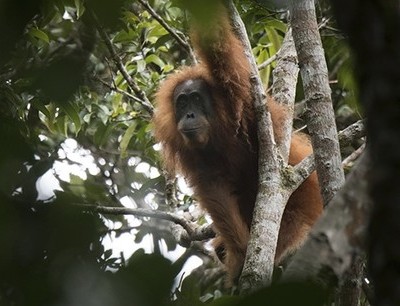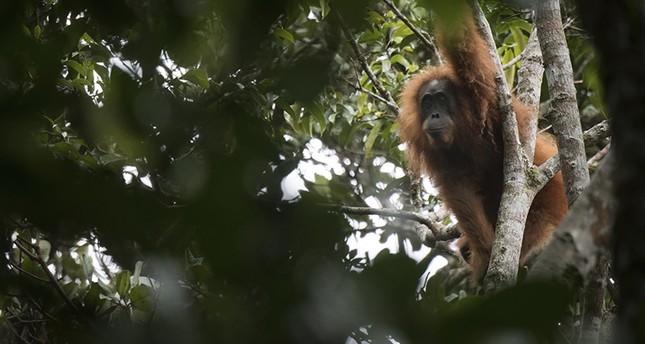
A new species of orangutan has been discovered in the remote jungles of Indonesia, immediately becoming the world's most endangered great ape, researchers said Friday.
"It's the first declaration of a new great ape species in about 100 years," Ian Singleton, co-author of the study and director of the Sumatran Orangutan Conservation Programme, told AFP.
The species, called 'Tapanuli orangutan', lives in the Batang Toru forest on Sumatra island, and numbers only about 800 in total, making it the most endangered great ape in the world, Singleton added.
Until recently, scientists thought there were only two genetically distinct types of orangutan, Bornean and Sumatran.
The research is based on analysis of the skeleton of an adult male killed in a conflict with villagers, a genetic study indicating the population's evolutionary split from other orangutans occurred about 3.4 million years ago, and analysis since 2006 of behavioral and habitat differences.
The primates are confined to a range of about 1,100 square kilometers (425 square miles) in the Batang Toru forest in the Tapanuli districts of Northern Sumatra. Historically, the population has probably been isolated from Sumatran orangutans further north for 10,000 to 20,000 years based on the most recently detectable influx of male genes from outside, according to the genetic study.
Aside from genetic evidence and the physical differences that are most apparent in comparison with Bornean orangutans, other unique characteristics include diet, restriction of habitat to upland areas and the male's long call.
Primatologist Russell Mittermeier, head of the primate specialist group at the International Union for the Conservation of Nature, called the finding a "remarkable discovery" that puts the onus on the Indonesian government to ensure the species survives.
Mittermeier, who was not one of the 37 authors of the study, said he was "very excited" by the research.
Last year, the IUCN classified Bornean orangutans as critically endangered due to a precipitous population decline caused by destruction of their forest habitat for palm oil and pulp wood plantations. Sumatran orangutans have been classified as critically endangered since 2008.
Matthew Nowak, one of the study's authors, said the Tapanuli orangutans live in three pockets of forest that are separated by non-protected areas.
"For the species to be viable into the future, those three fragments need to be reconnected via forest corridors," he said.
Additionally, the authors are recommending that development plans for the region including a hydropower plant be stopped by the government.
"It is imperative that all remaining forest be protected and that a local management body works to ensure the protection of the Batang Toru ecosystem," Nowak said.
The Batang Toru orangutan population was found during a field survey by researcher Erik Meijaard in 1997 and a research station was established in the area in 2006.
It was not until 2013, when the adult male skeleton became available, that scientists realized how unique the population was, which sparked the largest genomic study of wild orangutans ever carried out to provide further evidence of a third orangutan species.
There is no standardized international system for recognition of new species, but to be taken seriously a discovery requires at least publication in a credible peer-reviewed scientific journal. (www.dailysabah.com)

This undated photo released by the Sumatran Orangutan Conservation Programme shows a Tapanuli orangutan in Batang Toru Ecosystem in Tapanuli, North Sumatra, Indonesia. (AP Photo)